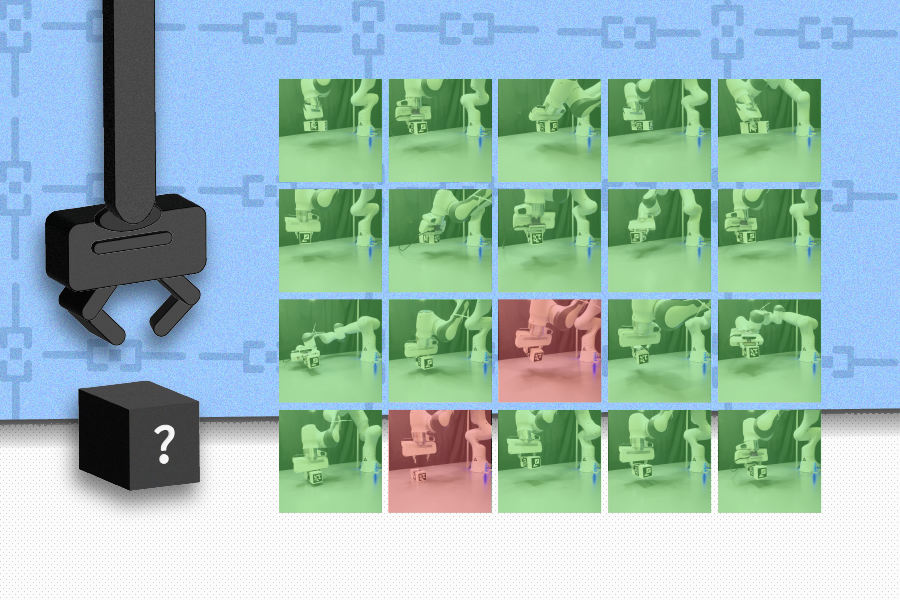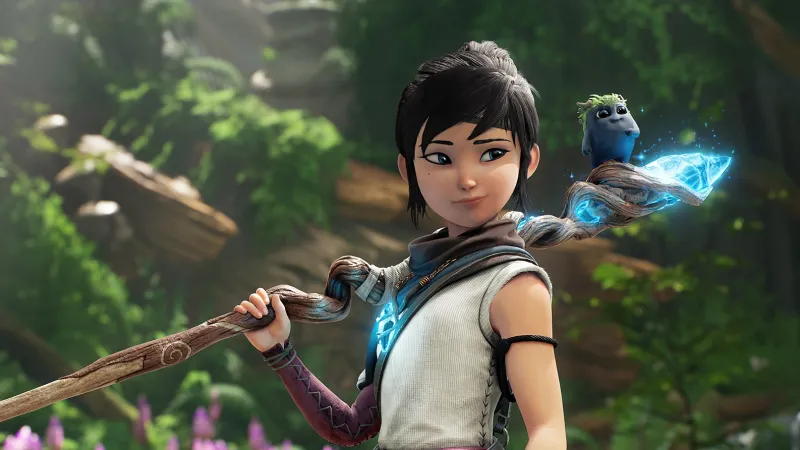Vijay Balasubramaniyan is Co-Founder & CEO of Pindrop. He’s held various engineering and research roles with Google, Siemens, IBM Research and Intel. Vijay holds patents in VoIP security and scalability and he frequently speaks on phone fraud threats at technical conferences, including RSA, Black Hat, FS-ISAC,…
Supercharging Large Language Models with Multi-token Prediction
Large language models (LLMs) like GPT, LLaMA, and others have taken the world by storm with their remarkable ability to understand and generate human-like text. However, despite their impressive capabilities, the standard method of training these models, known as “next-token prediction,” has some inherent limitations. In…
Scientists should use AI as a tool, not an oracle
How AI hype leads to flawed research that fuels more hype…
Check Point warns of PDF malware surge – CyberTalk

EXECUTIVE SUMMARY:
In a startling discovery, Check Point Research has found that nearly 70% of all file-based email attacks worldwide now leverage malicious PDFs. This figure represents a 20% increase, year-over-year.
| One out of every 246 email attachments is malicious. |
Such a sharp year-over-year spike indicates that cyber criminals perceive PDFs as an effective malware delivery mechanism — one which they will continue to employ until relevant threat prevention tools see widespread adoption.
PDF attacks
As Check Point security engineer Rudi van Rooyen explains it, PDF-based attacks exploit vulnerabilities in traditional, signature-based security scanners. Cyber criminals embed hidden content in PDFs and the content effectively bypasses security checks.
The healthcare industry has been particularly hard-hit by PDF-based threats and, given the operational damage that could occur and the lives that could be affected, the need for effective countermeasures is readily apparent.
AI-powered protection
To address this issue, Check Point has launched an AI-powered engine called Deep PDF. It utilizes deep learning algorithms to review all PDF content components.
Deep PDF examines:
- The internal structure of PDFs
- Embedded images and their placement
- Embedded URLs and their context within the document
- Raw content within the PDF
Says Van Rooyen, Deep PDF technology is a component of Check Point’s ThreatCloud AI. It’s available to all Check Point customers; from small businesses to multi-national companies that leverage the complete security platform.
To analyze malicious PDFs, Check Point’s ThreatCloudAI not only utilizes the Deep PDF tool, but also deploys over 300 machine learning features to conduct a comprehensive analysis of a given email attachment and its payload.
Call to action for security leaders
The sharp spike in PDF-based malware indicates that security leaders need to take action. Flawed email security (signature-based defense) is no longer good enough.
To stay ahead of attachment-focused adversaries, organizations need to proactively embrace AI/ML-driven threat prevention.
Partner with industry leading security providers, like Check Point, to obtain cutting-edge technologies that can effectively detect and prevent the most sophisticated of malware-based attacks.
Key takeaways for security leaders
- Leverage AI-powered technologies, like Deep PDF, to enhance your organization’s cyber security posture.
- Implement regular cyber security awareness programs for employees. Discuss PDF-based attacks, how to approach a potentially malicious PDF, and how to proceed if a suspect file is accidentally downloaded or opened.
- Ensure that your organization maintains a comprehensive incident response plan. Detail procedures for containing and mitigating cyber security incidents. Regularly test and evolve the plan to reflect new threats, like PDF-based malware.
- Collaborate across your sector and with security providers, as partnerships can provide stabilizing resources and support.
For technical information concerning PDF-based threats, please visit the Check Point Research website. For more malware-related insights, please see CyberTalk.org’s past coverage.
Lastly, to receive thought leadership insights, groundbreaking research and emerging threat analyses each week, subscribe to the CyberTalk.org newsletter.
Helping robots grasp the unpredictable

When robots come across unfamiliar objects, they struggle to account for a simple truth: Appearances aren’t everything. They may attempt to grasp a block, only to find out it’s a literal piece of cake. The misleading appearance of that object could lead the robot to miscalculate physical properties like the object’s weight and center of mass, using the wrong grasp and applying more force than needed.
To see through this illusion, MIT Computer Science and Artificial Intelligence Laboratory (CSAIL) researchers designed the Grasping Neural Process, a predictive physics model capable of inferring these hidden traits in real time for more intelligent robotic grasping. Based on limited interaction data, their deep-learning system can assist robots in domains like warehouses and households at a fraction of the computational cost of previous algorithmic and statistical models.
The Grasping Neural Process is trained to infer invisible physical properties from a history of attempted grasps, and uses the inferred properties to guess which grasps would work well in the future. Prior models often only identified robot grasps from visual data alone.
Typically, methods that infer physical properties build on traditional statistical methods that require many known grasps and a great amount of computation time to work well. The Grasping Neural Process enables these machines to execute good grasps more efficiently by using far less interaction data and finishes its computation in less than a tenth of a second, as opposed seconds (or minutes) required by traditional methods.
The researchers note that the Grasping Neural Process thrives in unstructured environments like homes and warehouses, since both house a plethora of unpredictable objects. For example, a robot powered by the MIT model could quickly learn how to handle tightly packed boxes with different food quantities without seeing the inside of the box, and then place them where needed. At a fulfillment center, objects with different physical properties and geometries would be placed in the corresponding box to be shipped out to customers.
Trained on 1,000 unique geometries and 5,000 objects, the Grasping Neural Process achieved stable grasps in simulation for novel 3D objects generated in the ShapeNet repository. Then, the CSAIL-led group tested their model in the physical world via two weighted blocks, where their work outperformed a baseline that only considered object geometries. Limited to 10 experimental grasps beforehand, the robotic arm successfully picked up the boxes on 18 and 19 out of 20 attempts apiece, while the machine only yielded eight and 15 stable grasps when unprepared.
While less theatrical than an actor, robots that complete inference tasks also have a three-part act to follow: training, adaptation, and testing. During the training step, robots practice on a fixed set of objects and learn how to infer physical properties from a history of successful (or unsuccessful) grasps. The new CSAIL model amortizes the inference of the objects’ physics, meaning it trains a neural network to learn to predict the output of an otherwise expensive statistical algorithm. Only a single pass through a neural network with limited interaction data is needed to simulate and predict which grasps work best on different objects.
Then, the robot is introduced to an unfamiliar object during the adaptation phase. During this step, the Grasping Neural Process helps a robot experiment and update its position accordingly, understanding which grips would work best. This tinkering phase prepares the machine for the final step: testing, where the robot formally executes a task on an item with a new understanding of its properties.
“As an engineer, it’s unwise to assume a robot knows all the necessary information it needs to grasp successfully,” says lead author Michael Noseworthy, an MIT PhD student in electrical engineering and computer science (EECS) and CSAIL affiliate. “Without humans labeling the properties of an object, robots have traditionally needed to use a costly inference process.” According to fellow lead author, EECS PhD student, and CSAIL affiliate Seiji Shaw, their Grasping Neural Process could be a streamlined alternative: “Our model helps robots do this much more efficiently, enabling the robot to imagine which grasps will inform the best result.”
“To get robots out of controlled spaces like the lab or warehouse and into the real world, they must be better at dealing with the unknown and less likely to fail at the slightest variation from their programming. This work is a critical step toward realizing the full transformative potential of robotics,” says Chad Kessens, an autonomous robotics researcher at the U.S. Army’s DEVCOM Army Research Laboratory, which sponsored the work.
While their model can help a robot infer hidden static properties efficiently, the researchers would like to augment the system to adjust grasps in real time for multiple tasks and objects with dynamic traits. They envision their work eventually assisting with several tasks in a long-horizon plan, like picking up a carrot and chopping it. Moreover, their model could adapt to changes in mass distributions in less static objects, like when you fill up an empty bottle.
Joining the researchers on the paper is Nicholas Roy, MIT professor of aeronautics and astronautics and CSAIL member, who is a senior author. The group recently presented this work at the IEEE International Conference on Robotics and Automation.
TickLab: Revolutionizing Finance with AI-Powered Quant Hedge Fund and E.D.I.T.H. – AI News
TickLab, founded by visionary CTO Yasir Albayati, is at the forefront of innovation in the financial sector, specialising in deploying advanced decentralised AI into finance. Our company operates as a quantitative hedge fund, focusing on crypto, stocks, and forex markets. With the launch of our cutting-edge…
CreatorsJet Review: The Ultimate Tool for Content Creators?
If you’re a content creator or influencer, a media kit is a must for landing more brand deals. It gives potential brand collaborators an insight into your work, audience demographics, and more. I recently came across CreatorsJet, a user-friendly AI tool to manage campaigns and instantly…
Kena: Bridge Of Spirits Guides Players To Xbox In August

Kena: Bridge of Spirits is making the leap to Xbox in August. The 2021 action-adventure game has been available only on PlayStation and PC, and its move to Microsoft’s platform comes with some new in-game goodies.
As the debut title by Ember Lab, this story-driven action game stars Kena, a young spirit guide who must unravel the mystery of a destroyed village by helping lost souls move on to the afterlife. She’s assisted by the Rot, tiny, adorable spirits Kena can command to aid in puzzle-solving and combat. The game’s design draws inspiration from series such as The Legend of Zelda, while combat has shades of From Software’s Dark Souls.
Kena hits Xbox Series X/S and Xbox One on August 15 for $39.99 and will include exclusive pirate-themed Rot hats, a Golden Rot skin, and a unique staff for Kena. A new physical premium edition will also be available and will consist of these items, a digital soundtrack, and an exclusive sticker sheet. The Xbox version also includes the Anniversary DLC update, which includes the Spirit Guide Trials, additional Kena outfits, and New Game+
[embedded content]
We awarded Kena: Bridge of Spirits a 9 out of 10, with former editor-in-chief Andrew Reiner writing in his review, “Bridge of Spirits stumbles a little in spots, yet confidently sprints into the heart of the adventure, rewarding the player with secrets galore and visuals that are almost always worth admiring. If you love Zelda-like games or are just looking for an experience that will make you smile every step of the way, you can’t go wrong with Kena: Bridge of Spirits.” The game was also a sales success, recouping its development costs a month after its initial release in September 2021.
You can learn more about Kena: Bridge of Spirits by checking out our behind-the-scenes features in our cover story hub.
The PC Adapter For PlayStation VR2 Arrives This August With Some Drawbacks
After teasing PC support tests earlier this year, the PC adapter for PlayStation VR2 arrives this August, the company has revealed. More specifically, the device will cost $59.99 and hit select retailers and PlayStation’s online store starting August 7. With this device, you can use the PlayStation VR2 hardware to play SteamVR games, including the critically acclaimed Half-Life: Alyx.
Ironically, PlayStation gamers have been asking for a Half-Life: Alyx port for PlayStation VR (and now PlayStation VR2) for years. Though that still isn’t happening, this PC adapter at least allows players to use their PlayStation VR2 device to play the game through Steam. They can do the same with hundreds of other SteamVR games, like Fallout 4 VR and War Thunder.
Here’s a look at the minimum PC requirements to use PlayStation VR2 on your PC:

However, as exciting as being able to use your PlayStation VR2 device on PC is, it comes with some distinct drawbacks.
“PS VR2 was designed from the ground up specifically for PS5 – so you’ll notice that some key features, like HDR, headset feedback, eye tracking, adaptive triggers, and haptic feedback (other than rumble), are not available when playing on PC,” the PlayStation Blog post reads. “However, other high-fidelity and sensory immersion features on PS VR2 are supported, including 4K visuals (2000 x 2040 per eye), 110-degree field of view, finger touch detection, and see-through view, as well as foveated rendering (without eye tracking) and 3D Audio in supported games.”
PlayStation says the most immersive way to experience PlayStation VR2 will remain the PS5, even after this PC adapter is available for purchase.
To set up the PC adapter, you will have to connect PlayStation VR2 to your PC using the adapter and the DisplayPort 1.4 cable. After that, download the PlayStation VR2 App and the SteamVR app from Steam. This will allow you to set up the device on PC, customize your settings, and play SteamVR games.
The PlayStation VR2 PC adapter will be available for purchase starting August 7.
For more, read Game Informer’s review of Half-Life: Alyx, and then read Game Informer’s review of PlayStation VR2.
Are you going to purchase the PlayStation VR2 PC adapter? Let us know in the comments below!
X now permits AI-generated adult content
Social media network X has updated its rules to formally permit users to share consensually-produced AI-generated NSFW content, provided it is clearly labelled. This change aligns with previous experiments under Elon Musk’s leadership, which involved hosting adult content within specific communities. “We believe that users should…
